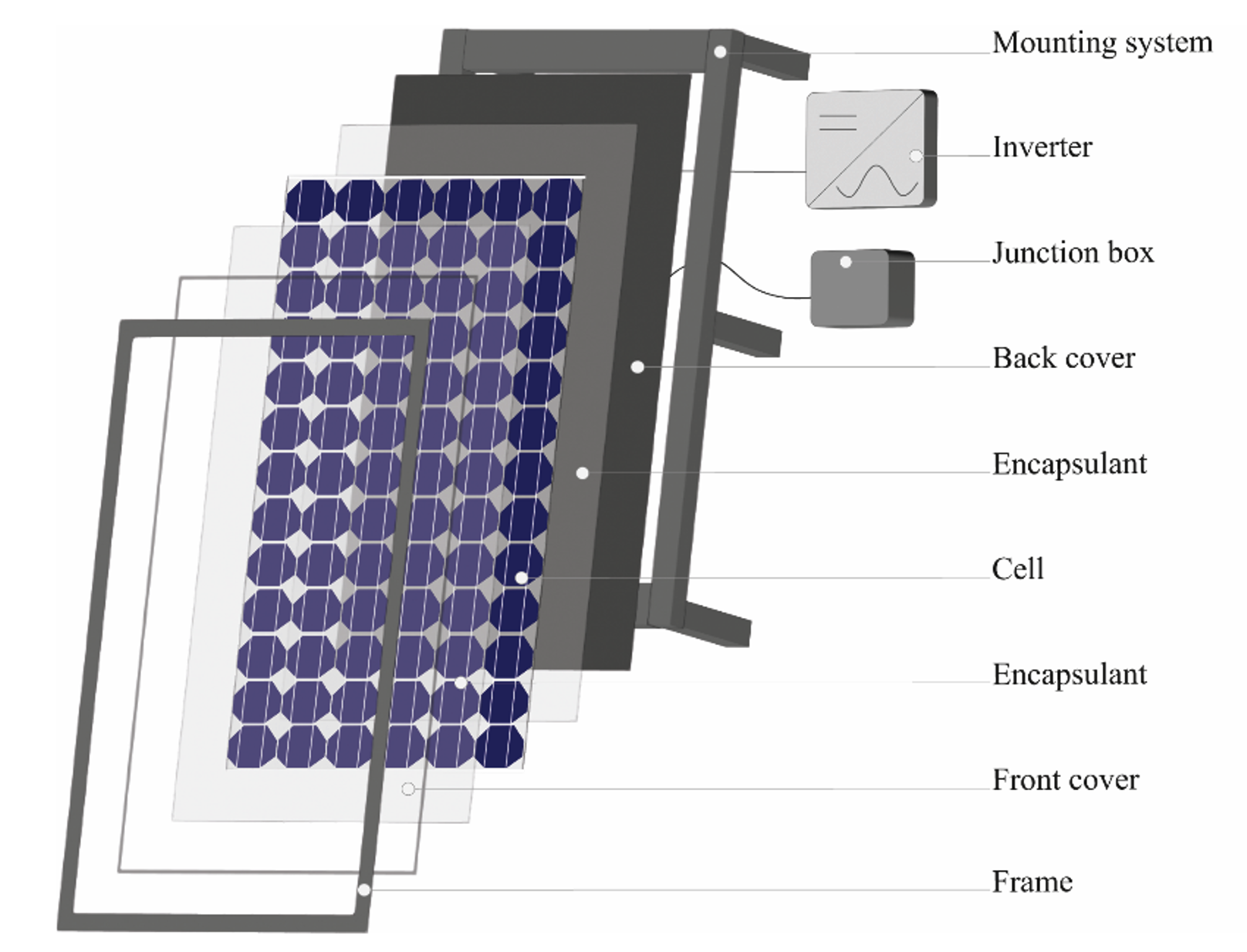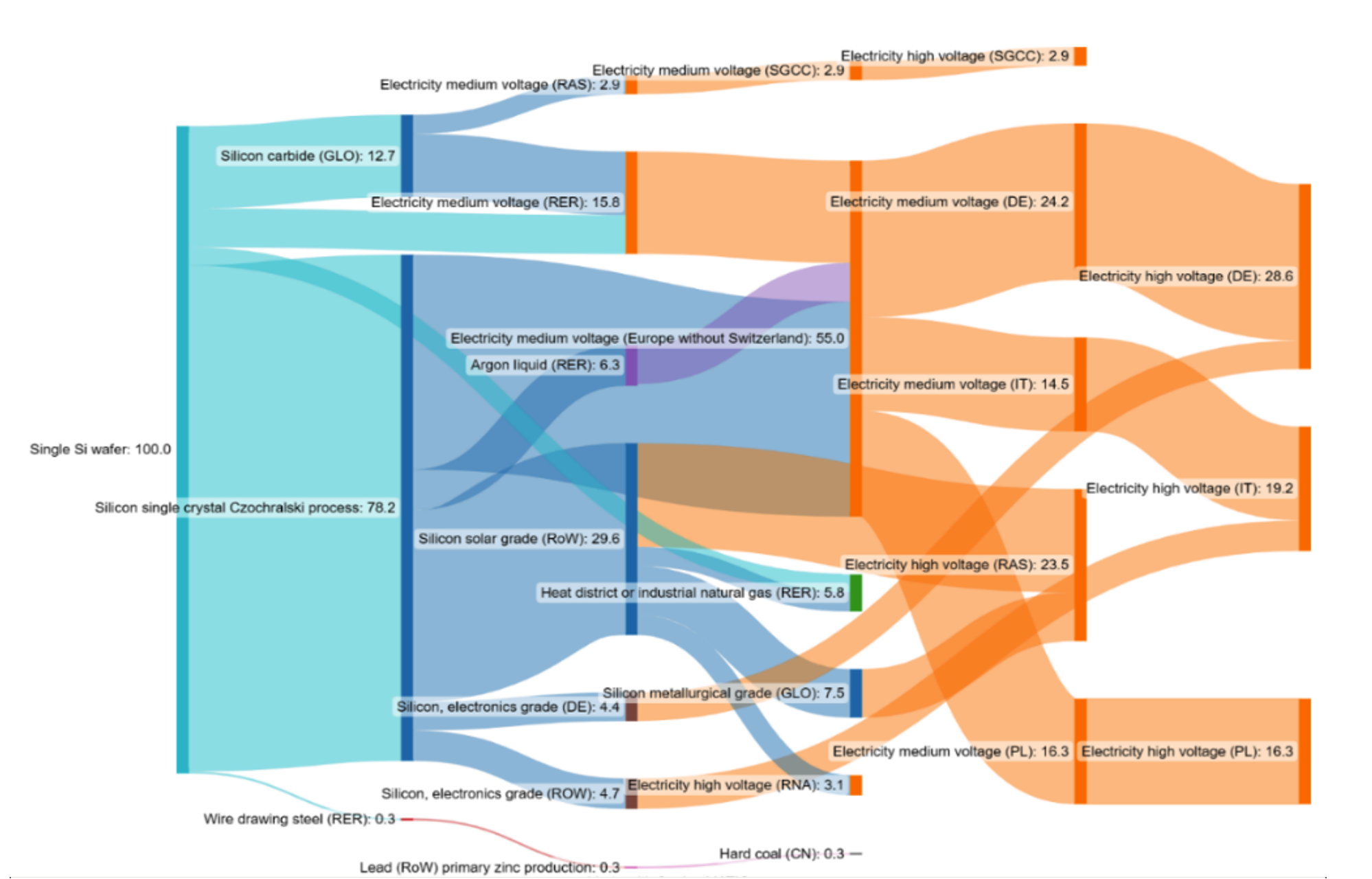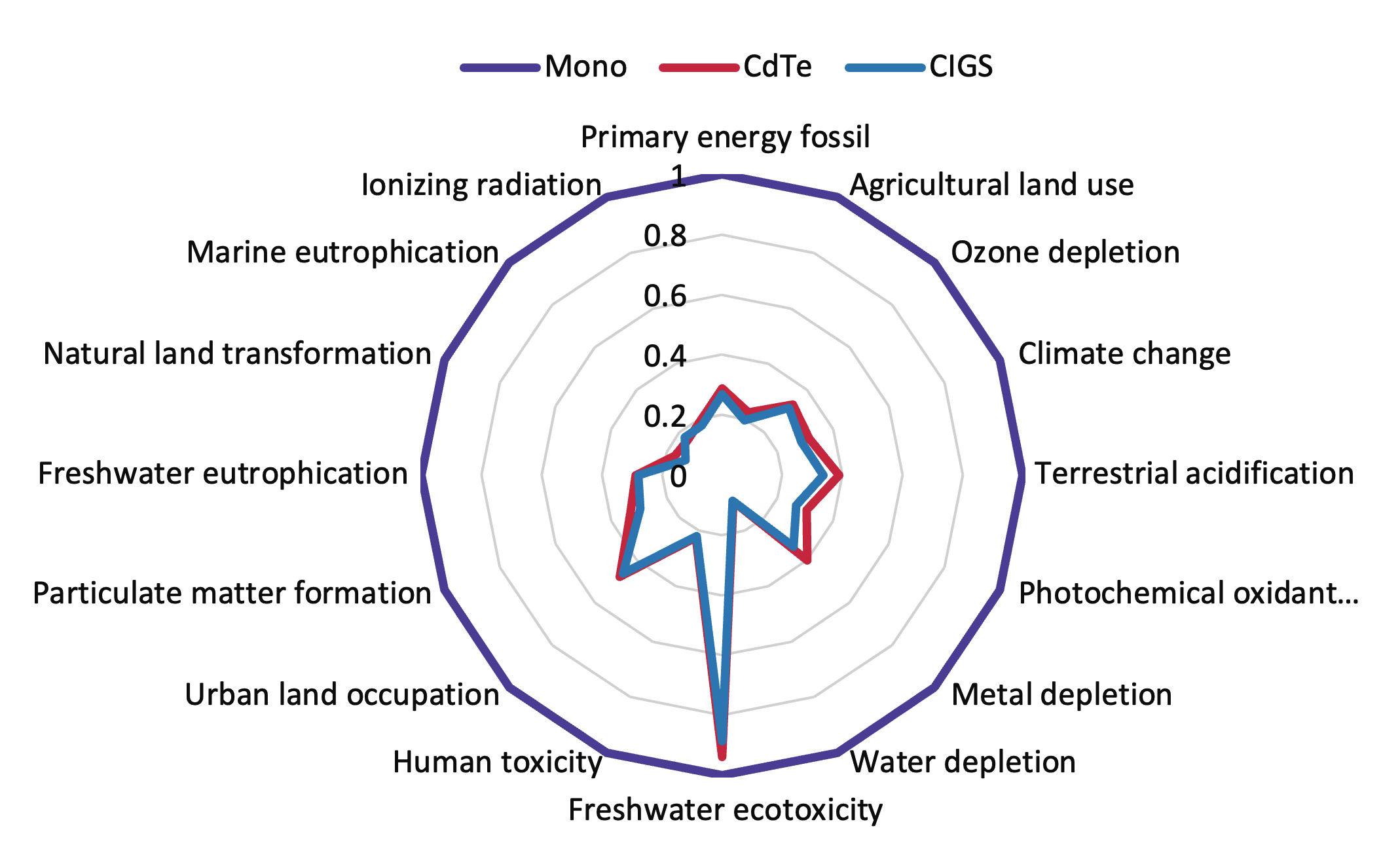Photovoltaic Life Cycle Assessment
Solar panels have emerged as a transformative technology towards decarbonizing the grid and combating climate change. Over the years, significant advancements in solar panel technology have driven remarkable increases in efficiency, affordability, and scalability. However, to fully analyze the potential of photovoltaics in achieving sustainable energy goals, a comprehensive consideration of life cycle assessment is needed. This assessment requires a detailed examination of the embodied impact of PVs, particularly in light of the current carbon budget.

Parametric Input
Currently, the availability of structured and bottom-up life cycle data enabling the analysis and comparison of various configurations of PV panels is limited. This data gap becomes an obstacle for informed decision-making processes when choosing between different options in the field of solar photovoltaics. This tool enables a users to quickly determine the lifecycle impact of different PV devices.

Multitude of Outputs
A single PV module has a large supply chain, which has far reaching environmental impacts. With this tool we bring the a wider look at the potential environmental impacts of a PV device by looking through the following lenses: Terrestrial acidification, Climate change, Ozone depletion, Human toxicity, Primary energy fossil, Agricultural land use, Photochemical oxidant formation, Metal depletion, Water depletion, Freshwater ecotoxicity, Urban land occupation, Particulate matter formation, Freshwater eutrophication, Natural land transformation, Marine eutrophication, and Ionizing radiation.
